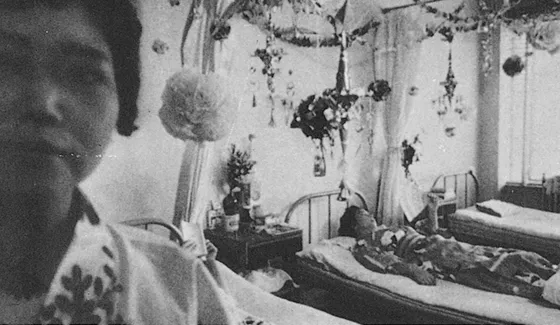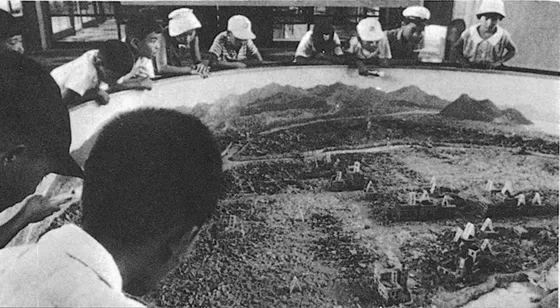
eBook - ePub
Hiroshima Mon Amour
A Screenplay
Marguerite Duras
This is a test
Compartir libro
- 112 páginas
- English
- ePUB (apto para móviles)
- Disponible en iOS y Android
eBook - ePub
Hiroshima Mon Amour
A Screenplay
Marguerite Duras
Detalles del libro
Vista previa del libro
Índice
Citas
Información del libro
The award-winning screenplay for the classic film the New York Post hailed as "overwhelming... a motion picture landmark." One of the most influential works in the history of cinema, Alain Renais's Hiroshima Mon Amour gathered international acclaim upon its release in 1959 and was awarded the International Critics' Prize at the Cannes Film festival and the New York Film Critics' Award. Ostensibly the story of a love affair between a Japanese architect and a French actress visiting Japan to make a film on peace, Hiroshima Mon Amour is a stunning exploration of the influence of war on both Japanese and French culture and the conflict between love and inhumanity.
Preguntas frecuentes
¿Cómo cancelo mi suscripción?
¿Cómo descargo los libros?
Por el momento, todos nuestros libros ePub adaptables a dispositivos móviles se pueden descargar a través de la aplicación. La mayor parte de nuestros PDF también se puede descargar y ya estamos trabajando para que el resto también sea descargable. Obtén más información aquí.
¿En qué se diferencian los planes de precios?
Ambos planes te permiten acceder por completo a la biblioteca y a todas las funciones de Perlego. Las únicas diferencias son el precio y el período de suscripción: con el plan anual ahorrarás en torno a un 30 % en comparación con 12 meses de un plan mensual.
¿Qué es Perlego?
Somos un servicio de suscripción de libros de texto en línea que te permite acceder a toda una biblioteca en línea por menos de lo que cuesta un libro al mes. Con más de un millón de libros sobre más de 1000 categorías, ¡tenemos todo lo que necesitas! Obtén más información aquí.
¿Perlego ofrece la función de texto a voz?
Busca el símbolo de lectura en voz alta en tu próximo libro para ver si puedes escucharlo. La herramienta de lectura en voz alta lee el texto en voz alta por ti, resaltando el texto a medida que se lee. Puedes pausarla, acelerarla y ralentizarla. Obtén más información aquí.
¿Es Hiroshima Mon Amour un PDF/ePUB en línea?
Sí, puedes acceder a Hiroshima Mon Amour de Marguerite Duras en formato PDF o ePUB, así como a otros libros populares de Medios de comunicación y artes escénicas y Guiones de cine. Tenemos más de un millón de libros disponibles en nuestro catálogo para que explores.
Información
Categoría
Guiones de cineSCENARIO
Part I
(As the film opens, two pair of bare shoulders appear, little by little. All we see are these shoulders—cut off from the body at the height of the head and hips—in an embrace, and as if drenched with ashes, rain, dew, or sweat, whichever is preferred. The main thing is that we get the feeling that this dew, this perspiration, has been deposited by the atomic “mushroom” as it moves away and evaporates. It should produce a violent, conflicting feeling of freshness and desire. The shoulders are of different colors, one dark, one light. Fusco's music accompanies this almost shocking embrace. The difference between the hands is also very marked. The woman's hand lies on the darker shoulder: “lies” is perhaps not the word; “grips” would be closer to it. A man's voice, flat and calm, as if reciting, says:)
HE: You saw nothing in Hiroshima. Nothing.
(To be used as often as desired. A woman's voice, also flat, muffled, monotonous, the voice of someone reciting, replies:)
SHE: I saw everything. Everything.
(Fusco's music, which has faded before this initial exchange, resumes just long enough to accompany the woman's hand tightening on the shoulder again, then letting go, then caressing it. The mark of fingernails on the darker flesh. As if this scratch could give the illusion of being a punishment for: "No. You saw nothing in Hiroshima.” Then the woman's voice begins again, still calm, colorless, incantatory:)
SHE: The hospital, for instance, I saw it. I'm sure I did. There is a hospital in Hiroshima. How could I help seeing it?



(The hospital, hallways, stairs, patients, the camera coldly objective.* [We never see her seeing.] Then we come back to the hand gripping—and not letting go of—the darker shoulder.)
HE: You did not see the hospital in Hiroshima. You saw nothing in Hiroshima.
(Then the woman's voice becomes more . . . more impersonal. Shots of the museum.† The same blinding light, the same ugly light here as at the hospital. Explanatory signs, pieces of evidence from the bombardment, scale models, mutilated iron, skin, burned hair, wax models, etc.)
SHE: Four times at the museum. . . .
HE: What museum in Hiroshima?
SHE: Four times at the museum in Hiroshima. I saw the people walking around. The people walk around, lost in thought, among the photographs, the reconstructions, for want of something else, among the photographs, the photographs, the reconstructions, for want of something else, the explanations, for want of something else.
Four times at the museum in Hiroshima.
I looked at the people. I myself looked thoughtfully at the iron. The burned iron. The broken iron, the iron made vulnerable as flesh. I saw the bouquet of bottle caps: who would have suspected that? Human skin floating, surviving, still in the bloom of its agony. Stones. Burned stones. Shattered stones. Anonymous heads of hair that the women of Hiroshima, when they awoke in the morning, discovered had fallen out.
I was hot at Peace Square. Ten thousand degrees at Peace Square. I know it. The temperature of the sun at Peace Square. How can you not know it? . . . The grass, it's quite simple. . .
HE: You saw nothing in Hiroshima. Nothing.
(More shots of the museum. Then a shot of Peace Square taken with a burned skull in the foreground. Glass display cases with burned models inside. Newsreel shots of Hiroshima.)
SHE: The reconstructions have been made as authentically as possible.
The films have been made as authentically as possible.
The illusion, it's quite simple, the illusion is so perfect that the tourists cry.
One can always scoff, but what else can a tourist do, really, but cry?
I've always wept over the fate of Hiroshima. Always.
(A panorama of a photograph taken of Hiroshima after the bomb, a “new desert” without reference to the other deserts of the world.)
HE: No. What would you have cried about?
(Peace Square, empty under a blinding sun that recalls the blinding light of the bomb. Newsreels taken after August 6, 1945. Ants, worms, emerge from the ground. Interspersed with shots of the shoulders. The woman's voice begins again, gone mad, as the sequence of pictures has also gone mad.)
SHE: I saw the newsreels.
On the second day, History tells, I'm not making it up, on the second day certain species of animals rose again from the depths of the earth and from the ashes.
Dogs were photographed.
For all eternity.
I saw them.
I saw the newsreels.
I ...